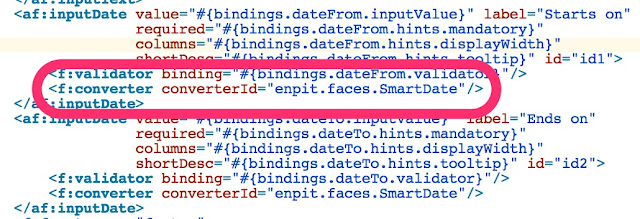Yesterday the long awaited Oracle Cloud became reality (at least for me)! Thanks Oracle! Of course I could not wait any longer and had to do a test drive with the Oracle Database and Java Cloud Services. In order to start we need the following
Getting started
- Get newest JDeveloper (JDEVADF_11.1.1.6.0CLOUD_GENERIC_121118.1600.6229) from http://www.oracle.com/technetwork/developer-tools/jdev/downloads/jdeveloper11116-1377208.html
- Get Oracle Cloud 30 days Trial Java Service (which includes the database cloud service) for free: https://cloud.oracle.com
Once you confirm your activation link for the trial request you will receive an email with Service Details for
- Identity Domain (which actually is a logical group for associated Users and Cloud Services)
- Oracle Database Cloud Service
- Oracle Java Cloud Service
- Domain FTPs Account Details
In the mail there also will be a temporary password which must be changed after first login at the Identity Console. One thing really overwhelmed me is the fact that for every service you get dedicated user credentials. So there is a lot of stuff that is to be handled.
Identity Domain / Console
The Identity Domain actually is a logical group for associated Users and Cloud Services that is managed by the Identity Domain Administrator. The Identity Console is a web based application for
- Manage User Profile
- Create / Delete Users, Reset Passwords
- Create / Delete Roles, Assign to Users
The Identiy Console is build with ADF. It looks like that
Oracle Database Cloud Service
The Oracle Database Cloud Service runs Oracle DB 11gR2 and is managed by Apex 4.1.1.00.23. So logically no ADF here. Imagine you are running Oracle XE. Same here.
RESTful Services (by Application Express Listener)
RESTful services are created inside Apex and are delivered right from the Database through the Apex Listener
The defined RESTful Services can be tested right from the browser:
As you can imagine this allows pretty rapid development of RESTful Services! Beside JSON, CSV Format is supported. No XML!
As a sample DB application the following Apex App is installed and by default to demo key features of Oracle Apex! Further Apex applications can be easily deployed from the apex Workspace.
In order to export Database strucure + data it is possible to trigger a data pump job with a single Mouse Click. After the job is completed the Dumpfile can be grabbed through SFTP from the /download user directory. The created files are automatically cleaned up after about 2 days. So do not try to archive your data here.
My test worked well without any trouble! The download speed was acceptable to although I did not download Gigs of data.
Access DB Schema
Now let us come to the interesting part. How can we access the DB Schema from - e.g. SQLDeveloper or JDeveloper. In this case I will demo it from the new JDeveloper 11.1.1.6 (Build 6229)
In order to access the Database Cloud service from the IDE we need a so called "Cloud Connection User" to be created in the database service console (Apex) with the SQL Developer Group as stated in the JDeveloper context help. This can can be easily done through the Apex Admin Tools (Manage users and groups). I won't go into further details here.
Now it is possible to create the connection from JDeveloper/SQLDeveloper
Enter your service details
and we are up and running, being able to see the structure and contents of the cloud database instance.
Access for example the table 'DEPT' and browse the data.
The interesting part here is that it is not possible to change any database objects.
Deploying DB Objects is only possible through the newly introduced "Database Cart" which is accessible from "View > Database > Database Cart".
Oracle Java Cloud Service Control
To monitor, deploy/undeploy start/stop Java and ADF Applications. It looks pretty simple and easy to use: Performance, Data Sources, Applications. Everything you need to get started.
This control is a subset of Oracle Enterprise Manager Cloud Control 12cR2 (12.1.0.2) as you can see in the about page.
In one of the next posts I am going to show how to "Deploying ADF Applications into the Oracle Cloud". Stay tuned.
Conclusion
In its current stage Oracle Cloud is promising Cloud Foundation for PaaS and SaaS. It includes
- Identity Management / WebBased Identity Console (ADF Application)
- Java Cloud Service Control to Monitor and Deploy your Java Applications (ADF Application)
- Apex Control to Administer and Monitor Apex DB Applications and Cloud Connection Users
- IDE Integration in JDeveloper 11.1.1.6 (Build 6229)
- Oracle Cloud Java SDK Command Line Interface
- IDE Integration in Oracle Enterprise Pack for Eclipse.
- IDE Integration in Netbeans is on its way....
Start your cloud experience now! Goto http://cloud.oracle.com
















